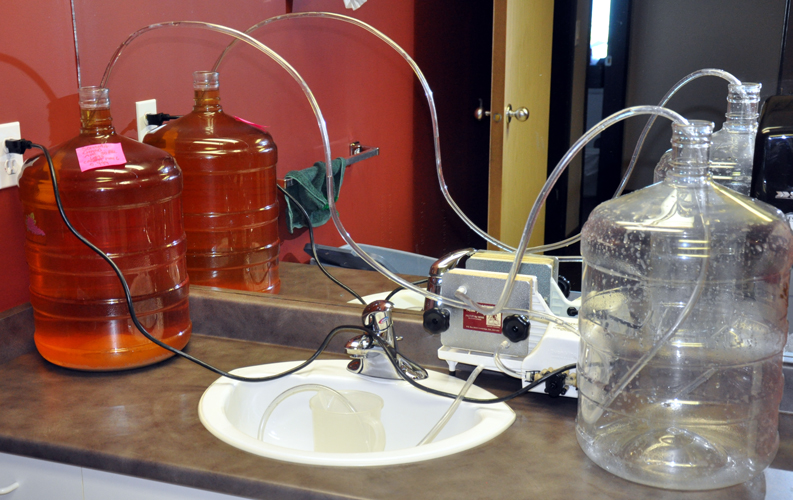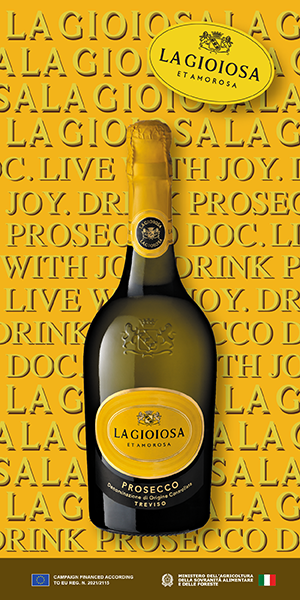
Q
I have a 2003 Chardonnay aging in my garage. I have about 65 gallons, which I initially fermented at about 40 degrees F (4 degrees C) for four months and then moved to oak. The wine fermented slowly and is now at 1% residual sugar and has completed malolactic fermentation. It is a very fruity, semi-sweet wine that is no longer fermenting. Rather than attempting to restart fermentation, I am inclined to bottle it as is. I don’t want to mess it up trying to get rid of the residual sugar. I have just purchased a filter system. The finest filter pads that it has are 0.5 micron nominal. I understand this to mean that it will stop half of the 0.5 micron particles. Is this fine enough for sterile filtration so that I can bottle this wine without worry of fermentation starting in the bottle? And do you think I should even put my wine through a sterile filtration?
Mike Johnston
Watsonville, California
A
The short answer to your question is: 0.45 micron nominal filter pads are the industry standard for “sterile” filtration. These pads prevent all yeast and bacteria from getting through. So, if you want to be as certain as possible, it’s best to filter with a 0.45 micron nominal pad. This will ensure that you take out the maximum amount of unwanted material.
The 0.5 micron filter sheet is a little bit “looser” than the 0.45 micron sheet and would most likely allow some microbes to pass through. If I was a winery with 50,000 gallons of 1% RS (residual sugar) Chardonnay that I wanted to bottle and put into the market, I would certainly make sure to final-filter with the tightest pads possible. Ruining thousands of customers’ opinions about your products due to one little yeast cell is a scary prospect.
However, as you might imagine, I’ve got a longer answer for you and you can choose what option best suits you. You’re a home winemaker with only 65 gallons of the 1% RS Chardonnay, not 50,000 gallons.
I should explain a little bit about filter and filtration jargon for those of us that might not be familiar with words like “0.45 micron nominal filter.” Pad filters are stacks of cellulose sheets that get mounted in a stainless steel or metal frame. Wine or juice is forced by a pump or by air pressure through the cellulose pads and depending upon the “tightness” of the cellulose matrix and the back pressure on the system, a varying degree of particles will pass through. When we say “nominal” and list a measurement like “0.45 micron” we are talking about the size of a filter pad. This pad is designed to prevent particles larger than the specified size (e.g. 0.45 micron) to pass through.
Not all filters available to home winemakers offer a true 0.45 micron nominal filter pad. Many only go as small as 0.5 micron nominal which is not truly a “sterile” filter. It is very close, but no cigar (as the saying goes). Bacteria, especially, because they are so much smaller than yeast cells, could get through filters with this porosity. Once they’re in, they can start munching on the sugar left in your wine and cause re-fermentation in the bottle. This is exactly what you’re trying to avoid.
However – you might be willing to take the risk because in your case, I actually think that the 0.5 micron filter would cut out enough microbial life to render you a relatively stable product. If you are very careful in your sanitation, filtering and bottling processes, I’d say it’s an acceptable risk. Your wine fermented slowly, went through malolactic fermentation and is not fermenting now – so it’s pretty stable (microbially speaking). It’s also a white wine, which means that you probably would be consuming it within a year or two. Most importantly – you love the wine the way it is and don’t want to conduct a re-fermentation to decrease the residual sugar to a more stable level.

Q
I made my first batch of mead, (actually a braggot) and upon first racking determined the alcohol level to be approximately 10.5% ABV – right where I wanted it. However, the braggot is only three weeks old and has a distinctly sour taste. Will this taste mature and mellow into a nice mead flavor over time? If so, how much time should I give it?
Jared Wharton
Monterey, California
A
Congratulations for tackling one of the most interesting and esoteric of brews, the braggot (also spelled braggott or bragawd). A beverage that combines what some would say the best of what mead and ale have to offer, braggott is a traditional Welsh drink made from malt, hops, honey and spices like ginger and rosemary.
As I flip through my recipe books for reference, it seems like most recipes mention that it’s best to bottle-age the honey-beer for at least a month or two before consuming. My experience with straight mead tells me that you might want to wait even longer, maybe three months at the very least. Some of my mead-brewing friends even wait a year.
The sour notes you’re experiencing are familiar to many of your fellow brewers and winemakers, myself included. The fruity but slightly acidic taste and aromas are what I like to call the “fermentation bouquet” and are produced by the yeast during fermentation. To me, many commercial hefeweizens have this same sour, yeasty unfinished-fermentation smell. If your braggott is only three weeks old, then it needs some time to drop its sediment, lose the carbon dioxide (you can prime and bottle it later if you want) as well as lose the sometimes alarming fermentation bouquet.
For more of the Wine Wizard’s wisdom, pick up the latest issue of WineMaker magazine, now available at better home winemaking retailers and newsstand locations.







